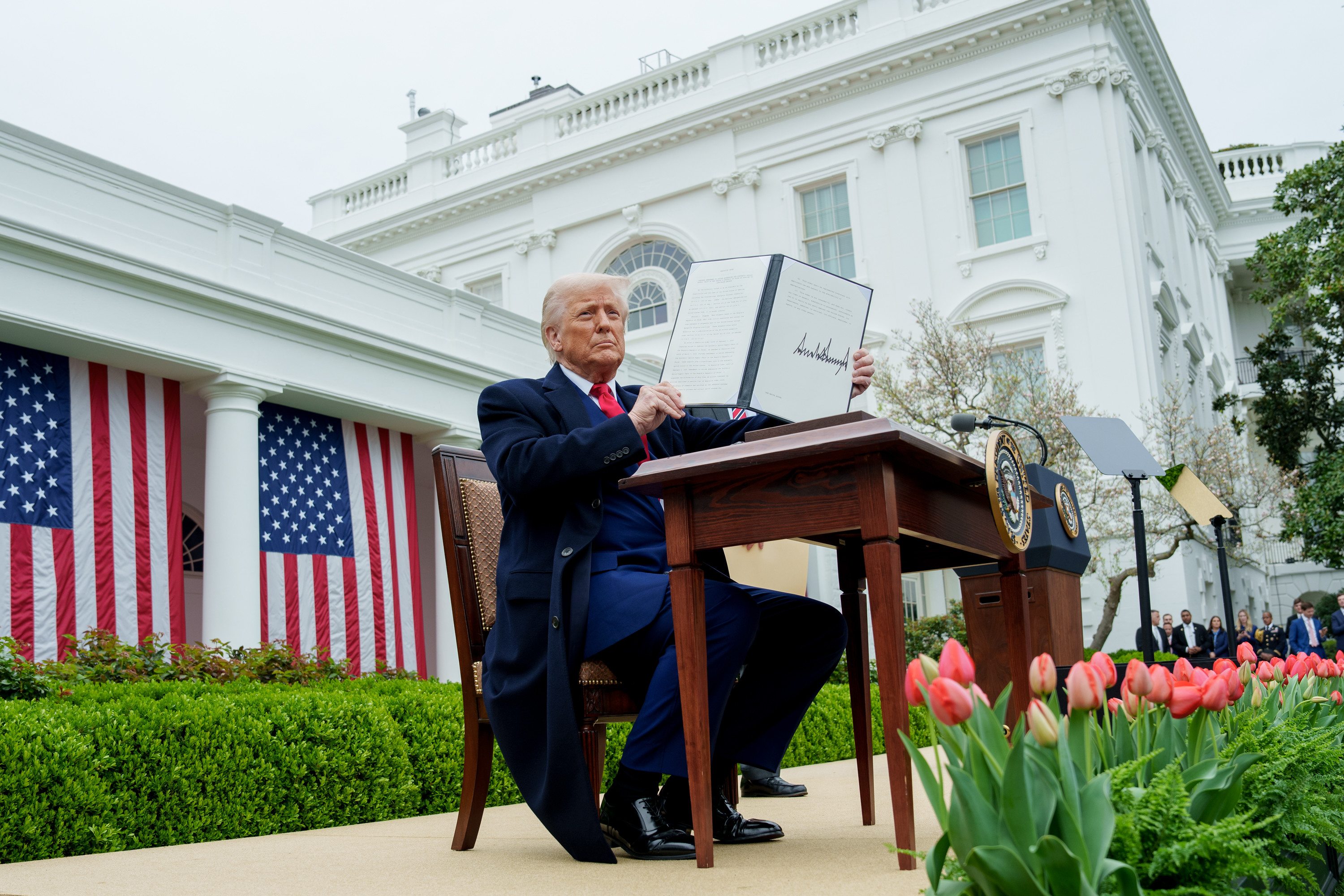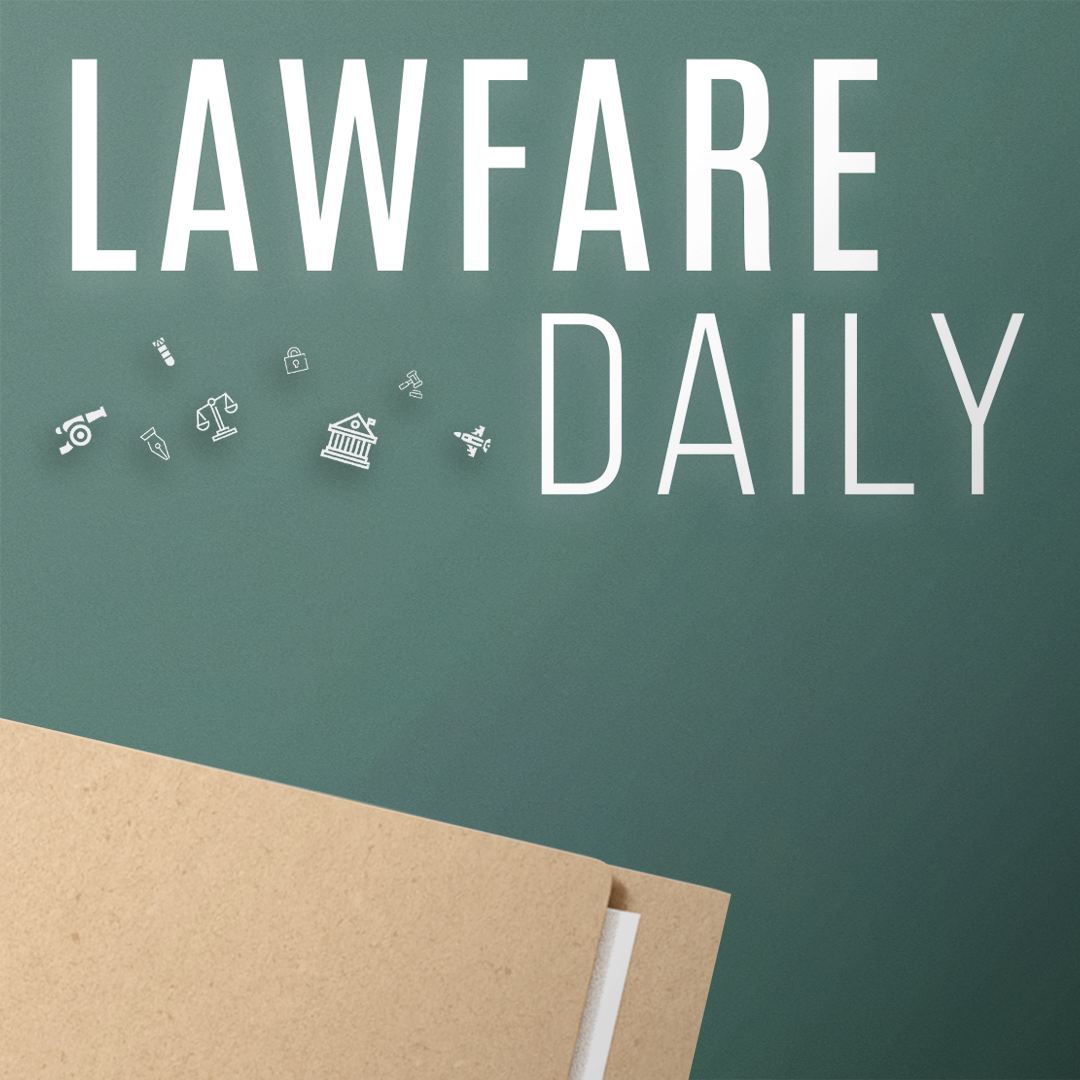Trial Dispatch: The Arraignment of Letitia James
.png?sfvrsn=48e6afb0_5)
Published by The Lawfare Institute
in Cooperation With

The Walter E. Hoffman Courthouse in Norfolk, Va., sits next to the Scope Arena—a concrete dome designed to resemble auditoriums built in Rome for the 1960 Summer Olympics, which is now home to a professional ice hockey team called the Norfolk Admirals—and little else of great note. This small city is a long way to go for the attorney general of New York, but Letitia James is quite familiar with the area.
If she weren’t, she wouldn’t be getting arraigned here for mortgage fraud.
The Justice Department indicted James two weeks ago on charges of bank fraud (18 U.S.C. § 1344) and false statements to a financial institution (18 U.S.C. § 1014)—asserting that she illegally financed her purchase of a three-bedroom, one-bathroom property in Norfolk as a second home when really she used it as an investment property, renting it to a family of three.
Now she’s appearing in court to face those charges, which she has called “baseless.” The New York Times reports that James’s great-niece has lived in the house since 2020. She testified to a grand jury that she doesn’t pay rent, and James’s tax forms show a total of $1,350 in rental income from the property.
Two hours before the 11:00 a.m. hearing on a Friday, the courthouse is flanked by press cameras and police cars. An enthusiastic canine member of the force sniffs and pants her way along the sidewalk. At the door, a security guard assisting visitors with placing their phones in faraday pouches tells me the morning has been “pretty busy, but nothing crazy.”
Indeed, most of the people lined up in the courthouse’s elaborate Art Deco entryway appear to be members of the media—who, after they’ve been let into Courtroom 5, spend their hour of waiting chatting about everything from Justice Department whistleblower Erez Reuveni to Zsa Zsa Gabor. We’re warned three times, by three separate personnel, that once the proceedings begin, we won’t be allowed to leave.
Soon after the third warning, minutes before 11:00 a.m., the interim U.S. attorney for the Eastern District of Virginia arrives. She brought this case—even presenting it to the grand jury herself when no one else in her office would. That’s literally no one. Halligan’s predecessor, Erik Siebert, resigned or was fired from his position when he declined to indict both James and former FBI Director James Comey on what he believed were flimsy bases. Halligan has dispatched other resistant career prosecutors.
Thus short on willing local staff, Halligan walks into the room today with Roger Keller, an assistant U.S. attorney who has arrived in this Navy town from even farther afield than James: He works in the Eastern District of Missouri. (Two North Carolina-based prosecutors are heading the Comey case.) James and her defense team, headed by Abbe Lowell, enter not long after. Following some cordial hand-shaking and name-sharing, the crier calls out, “Oyez, oyez, oyez. All rise.”
Judge Jamar K. Walker takes his seat, the court comes to order, and the parties are introduced. These include Keller, who will represent the United States in the matter. Halligan, sitting silently on the far side of the prosecution’s table, is described as “also present.”
Judge Walker announces the arraignment of James, and proceeds through the customary procedure for an initial appearance. He warns the defendant of her right to counsel and to remain silent. He recites the charges in the indictment—bank fraud and false statements to a financial institution—as well as the maximum penalties of 30 years in prison and a fine of $1 million dollars.
Does James waive a formal reading of the indictment, the judge asks? She does, says Lowell. Does she wish to plead not guilty and have a trial by jury? She would like to enter her plea herself, please. And she does: “Not guilty, judge, to both counts.”
Judge Walker next wants to know whether the defendant wishes to avail herself of the trial within 70 days she’s entitled to under the Speedy Trial Act. “The speediest trial we can possibly get,” says Lowell, but then he adds a few caveats: Until the previous day, he didn’t know who the opposing counsel on the case would be. He still hasn’t been provided with discovery. And the motions he intends to introduce won’t be “run of the mill,” and so might take some time to work through. He’d like to postpone the trial “a bit—and I do mean a bit.”
The judge asks whether the defense is asking for a date “outside the speedy trial date but not far outside.” Lowell replies, “You said it better than I did.” A brief back-and-forth ensues in which the prosecution confirms it’s satisfied by the arrangement if James waives her right to a speedy trial and the judge explains that he can simply make an oral finding that a later date better serves the ends of justice, without her waiving said right.
Next, a similar exchange, wherein the government and the judge don’t seem entirely on the same page about the typical proceedings in the district or their pace. Keller says he expects the trial to take approximately two weeks. The judge asks emphatically, “Why?” Told that Keller plans to call eight to ten witnesses, but that the number may be “cut back,” the judge appears more surprised still.
“Ok, well, I’m not going to hold it against you”—presumably because Keller is, effectively, new here—but this sounds to Judge Walker more like a three to five day trial. “Our judges,” says Keller, like to be provided with a maximum timeframe. Lowell agrees with Judge Walker’s assessment. The trial is tentatively set for five days, starting on Jan. 26, 2026.
With that out of the way, it’s time to move on to motions. On Thursday, James submitted a notice of intent to file a motion to disqualify Halligan because of her alleged unlawful appointment as U.S. attorney. (James filed that motion shortly after the arraignment ended.) Judge Walker notes that a similar complaint already filed by Comey’s counsel has been assigned to U.S. District Judge for the District of South Carolina Cameron McGowan Currie. He wonders whether the parties would agree to consolidate the motions, given they may end up “identical or nearly identical.”
“We’re not only in favor,” says Lowell. “We hope” that’s exactly what will happen—and this hope is the reason he gave the court a heads up, so that there might be time to put the two together before the hearing scheduled for next month. This part is easy: Keller says the move would “make sense” to the government, too. Judge Walker says he’ll transfer this matter to Judge Currie.
The next motion invites a bit more controversy, or at least confusion. James also filed a motion prior to the arraignment asking the court to order the government to follow rules preventing disclosure of investigative and case materials, as well as to refrain from extrajudicial statements concerning the case to the press and public. This motion was prompted in part by an Oct. 20 article published inLawfare by my colleague, Senior Editor Anna Bower, detailing texts sent to her by Halligan in which Halligan criticizes Bower’s tweets about New York Times coverage of grand jury testimony in the case.
This violated, the filing says, Rule 6(e) of the Federal Rules of Criminal Procedure. It argues that the exchange with Bower and the other instances of apparent disclosure it describes—including pre-indictment reports that prosecutors intended to bring charges—also violate various rules, regulations, and ethical obligations. The motion doesn’t ask for a finding to that effect, only for an order to prevent such conduct in the future.
The judge, mentioning only “a journalist” and “an article published,” notes these oddities of the filing. Anyone hoping for a television-ready showdown in which the defense demands the prosecution be held in contempt is quickly disappointed: Judge Walker has interpreted the filing correctly, confirms Lowell.
The judge determines that leaves the prosecution three options: oppose the motion in its entirety; don’t oppose it at all; or oppose the proposed relief. The Eastern District prosecutors would have to preserve all documents relevant to the trial (a litigation hold) as well as create a log of all contact between its attorneys or agents and the media. The litigation hold doesn’t bother Keller. But he expresses reservations about the log, mentioning that “the defendant is also active on the Internet.” Specifically, he takes issue with her tweeting that she is innocent.
The judge, understandably, appears perplexed. He remarks that it’s unclear what Keller is asking. And it is: A public tweet from James in which she says “I am not fearful, I am fearless” has little to do with contact between her attorneys and the media. The misunderstanding only becomes greater when Keller elaborates that any log requirement for the government should also be a requirement for the defendant, and should cover “statements of innocence before the press.”
Does he mean that James should have to keep a record of any proclamations of her intention to fight the charges against her? Or does he mean she shouldn’t be allowed to make them at all?
Keller seems to be suggesting that the restrictions on the defendant’s public speech should mirror those placed on the prosecution. But this is not how these things work. Prosecutors have unique obligations not placed on defendants, who have First Amendment rights to protest their innocence.
Judge Walker delicately instructs Keller—a civil litigation lawyer by training, as it turns out—to take some time to think about the matter and get back to him. Lowell, for his part, declares that the rules to which government lawyers are held aren’t the same ones that apply to a defendant.
“The court certainly understands the requirements,” responds the judge. It is a little less certain that the prosecutor does.
Onward, then, to discovery.
Here, again, there’s some polite discord. Lowell and Keller, it turns out, have already conferred about when documents will be made available to the defense, and Keller says they’ve agreed on a date of Nov. 14. Lowell replies that this is “mostly correct,” in that he would like to receive the documents as soon as possible, but given he is hearing there are “mounds and mounds and mounds,” he’ll take what he can get when he can get it.
And here, again, Judge Walker is puzzled. Customarily, the government would be ready to provide at minimum its first production of evidence at or around the time of the arraignment, so that initial motions may be filed within two weeks. “Let me ask this, Mr. Lowell,” says the judge. “Do you intend to file a motion to dismiss based on selective or vindictive prosecution?”
It’s about the “worst kept secret” of the case, Lowell responds, that the defense believes James has a “deeply meritorious complaint” about a vindictive prosecution (motivated, presumably, by the president’s oft-stated animus against James after her office successfully sued him for misrepresenting the value of his real estate holdings). He also plans to consider a selective prosecution motion, depending on what discovery reveals.
Furthermore, James may issue a separate motion to dismiss on the grounds that the indictment doesn’t properly allege that she committed the crimes with which she has been charged.
Judge Walker says he would usually issue a discovery order at arraignment, but because the parties haven’t reached agreement, he will let them confer and submit briefs if they desire, after which he will issue an order: “As I’m sure you will learn, this district has a standard discovery order.”
The rest of the arraignment requires fewer educational efforts on his part—though not none. He reminds the government of its due process obligations; the prosecutor agrees. He assumes the government doesn’t seek detention of the defendant; Keller once again agrees. He seeks to confirm that both sides have received a pretrial services report; the prosecution exclaims, “We have not, your honor!” Following some conferring with his colleagues, Keller corrects himself with an, “Oh, we have.” Judge Walker provides him a moment to catch up.
The final word from the bench: Judge Walker expects the parties will “familiarize themselves with how we do things here,” to avoid any “missteps” going forward. He thanks the U.S. Marshals, law enforcement, and courthouse staff, and the court stands adjointed.
All rise, and eventually file out. The street outside is now filled with protesters. “This is THE WeAPoNI3ATion of GoveRNMENT,” reads one of their signs. “DON’T TURN THE FEDERAL JUDICIARY INTO A KANGAROO COURT,” reads another.
James delivers a short statement to the media, but it is hard to hear her over a man who has dubbed himself the secretary of retribution—who is excoriating Lowell for defending “the Biden Crime Syndicate”—or over the more supportive chants of the rest of the crowd.
There's one person this morning who doesn't address the court, and also seems to avoid talking to the press: Lindsey Halligan.




.jpg?sfvrsn=9b40c705_5)
